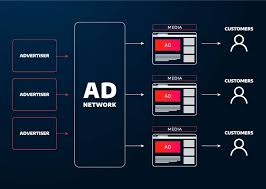Understanding Multiple Ad Networks
What is an Ad Network?
An ad network acts as an intermediary between advertisers looking to promote their products and publishers wanting to monetize their ad space. By aggregating ad inventory from various publishers, ad networks simplify the process of buying and selling advertising space. This centralized approach allows advertisers to reach a broader audience while providing publishers with a steady stream of revenue.
Types of Ad Networks Explained
Vertical vs. Horizontal Ad Networks
Ad networks can be categorized into two main types: vertical and horizontal networks.
- Vertical Ad Networks: These networks specialize in specific industries or niches, such as healthcare or technology. They enable advertisers to target highly relevant audiences, increasing engagement and conversion rates.
- Horizontal Ad Networks: In contrast, horizontal networks cover a wide range of industries and categories. They provide advertisers with extensive reach across diverse audiences, making them ideal for campaigns aiming for broad visibility.
Premium and Specialty Ad Networks
Another classification includes premium and specialty ad networks:
- Premium Ad Networks: These networks focus on high-quality inventory from reputable publishers. Although costs may be higher, the ads benefit from placement on well-known sites, enhancing brand credibility and visibility.
- Specialty Ad Networks: These platforms target specific ad formats or user behaviors, such as video ads or mobile advertising. They cater to advertisers seeking niche audiences through tailored marketing strategies.
How Do Multiple Ad Networks Work Together?
The Benefits of Using Multiple Ad Networks
Utilizing multiple ad networks allows publishers to diversify their revenue streams and optimize their ad inventory. Here are some key advantages:
- Increased Competition: By integrating several ad networks, publishers create a competitive environment that can drive up CPMs (cost per thousand impressions) as different networks bid for the same inventory.
- Broader Audience Reach: Different ad networks may have unique advertiser relationships, enabling publishers to tap into various audience segments that may not be accessible through a single network.
- Enhanced Fill Rates: When one network fails to fill an impression, others can step in, ensuring that publishers maximize their ad fill rates and revenue potential.
Managing Multiple Ad Networks Effectively
To manage multiple ad networks successfully, consider these strategies:
- Waterfall Method: This traditional approach ranks ad networks based on performance metrics like CPMs and fill rates. If the primary network cannot fill an impression, it cascades down to the next network in line.
- Header Bidding: This advanced method allows multiple ad networks to bid simultaneously for the same inventory in real-time auctions. This approach increases transparency and competition among bidders, often leading to higher revenues.
Common Questions About Multiple Ad Networks
How Do I Choose the Right Ad Network?
Selecting the right ad network depends on your specific goals and audience. Consider factors such as:
- Target Audience: Identify which networks have access to your desired demographic.
- Ad Formats: Ensure the network supports the types of ads you want to run (e.g., video, native).
- Performance Metrics: Review historical performance data to gauge potential success.
Can I Use Multiple Ad Networks with Google AdSense?
While it is possible to use multiple ad networks alongside Google AdSense, you must adhere to Google’s policies regarding ad placements and competition. Ensure that your chosen networks do not violate any terms set by Google.
Conclusion: Maximizing Your Advertising Strategy with Multiple Ad Networks
Embrace Diversity for Greater Success
Integrating multiple ad networks into your advertising strategy can significantly enhance your revenue potential and audience reach. By understanding the different types of ad networks available and how they operate together, you can make informed decisions that align with your marketing goals. Whether you choose vertical or horizontal networks, premium options or specialty formats, leveraging a diverse mix will ultimately lead to greater success in your advertising efforts.

